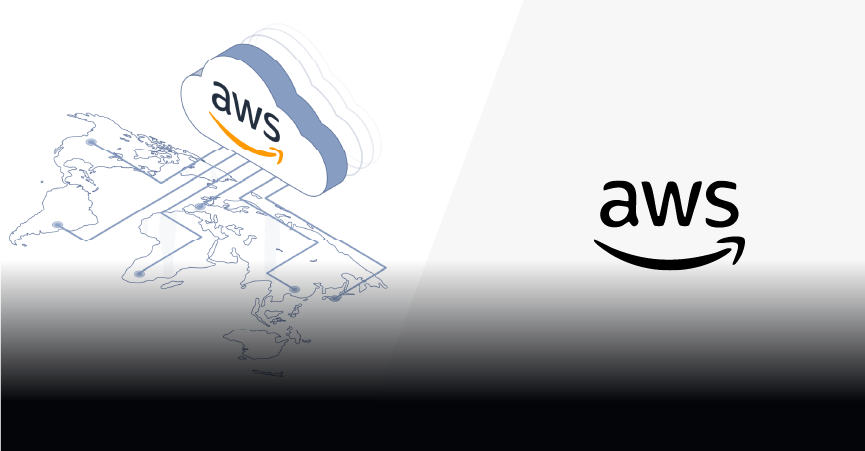|
Voiced by Amazon Polly |
Overview
Accelerating development with AWS CodePipeline and AWS CodeBuild is essential for efficient and reliable software delivery. Utilizing these services streamlines the continuous integration and deployment (CI/CD) process, enhancing collaboration and automation. AWS CodePipeline orchestrates the release pipeline, seamlessly integrating with AWS CodeBuild for building, testing, and deploying applications.
Pioneers in Cloud Consulting & Migration Services
- Reduced infrastructural costs
- Accelerated application deployment
Introduction
With comprehensive monitoring and integration capabilities, AWS CodePipeline and AWS CodeBuild empower teams to deliver high-quality software at an accelerated pace, fostering agility and innovation in the development lifecycle.
Understanding the tools and implementing best practices
- Understanding AWS CodePipeline and CodeBuild:
Before diving into optimization strategies, it’s necessary to have a solid understanding of AWS CodePipeline and AWS CodeBuild. AWS CodePipeline is a fully managed continuous delivery service that automates the build, test, and deployment phases of our release process. AWS CodeBuild, on the other hand, is a scalable build service that compiles source code, runs tests and produces ready-to-deploy artifacts. The artifacts can include compiled code and configuration files required for deployment. It should be packaged and made available as the outcome of the build.
- Designing an Efficient CI/CD Pipeline:
A well-designed CI/CD pipeline serves as the backbone for expediting software development. Beginning by outlining distinct stages in the pipeline, it starts at the source, moves to the build, then onto testing, and finally concludes with deployment by utilizing AWS CodePipeline’s user-friendly interface to construct a seamless workflow. The visual representation not only simplifies the development process but also empowers developers to oversee and govern the entire lifecycle effortlessly.
- Parallelizing Builds with AWS CodeBuild:
To save time, we can leverage AWS CodeBuild’s ability to parallelize builds at the same time. By breaking it down into smaller, separate jobs that can happen at the same time. This process not only speeds up the build phase but also optimizes resource utilization, allowing for faster completion status loops. This way, we can get results quickly and move on to the next steps in the project without unnecessary delays.
4. Efficient Source Control Integration:
Integrate AWS CodePipeline with the source control system, such as AWS CodeCommit, GitHub, and Bitbucket, by ensuring that triggers are set up appropriately so that the pipeline automatically starts when changes are detected in the repository. This ensures that builds are triggered promptly, minimizing idle time in the pipeline. This seamless connection between the source control and AWS CodePipleline creates an agile environment where changes are seamlessly integrated and progress is continuous.
- CodeBuild Customization for Speed:
Fine-tuning the AWS CodeBuild settings to maximize efficiency by customizing the build environment, selecting the appropriate compute resources, and optimizing for the specific application requirements by utilizing all the required features in AWS CodeBuild and adjusting build specifications, such as caching dependencies can significantly reduce build times.
- Implementing Automated Testing:
Testing early in the development process by incorporating automated tests into the initial stages of the pipeline. AWS CodeBuild supports a variety of testing frameworks, enabling the automation of unit tests, integration tests, and even performance tests. Early identification of issues during the testing phase prevents defects from spreading downstream in the pipeline, ultimately reducing overall development time and preventing deployment failures.
- Artifact Caching and Reusability:
Leveraging AWS CodeBuild’s artifact caching feature to store dependencies and resources. This feature allows us to store commonly used dependencies and build artifacts so we don’t have to rebuild them from scratch every time we run a build. Reusing these stored items in different builds ensures consistency and speeds up the later steps in the development process.
- Monitoring and Logging:
Enabling efficient pipeline optimization by implementing robust monitoring and logging. AWS CloudWatch and AWS CloudTrail offer valuable insights into AWS CodePipeline and AWS CodeBuild executions, facilitating quick analysis and effective issue troubleshooting. These tools act as pipeline sentinels, providing real-time visibility to identify bottlenecks and enhance overall performance.
- Manual Approval for Control and Governance:
By incorporating a manual approval stage, we create designated points in the pipeline where a human decision-maker can review the changes and decide whether to proceed with the deployment. This step is particularly valuable for critical or sensitive deployments, ensuring that only validated and authorized changes move forward.
- Continuous Feedback and Iteration:
Establishing a culture of always getting better by frequently checking and improving the CI/CD pipeline. Getting input from both development and operations teams to find areas that can be made better and using metrics and analytics to see how well the pipeline is working and keep making it faster and more efficient.
Representation of the Source and Build phases
Below is the representation of the Source and Build phases within the CI/CD pipeline using AWS CodePipeline

Deployment phase in AWS CodePipeline

Conclusion
Accelerating development with AWS CodePipeline and AWS CodeBuild requires a combination of thoughtful design, automation, and continuous improvement. By optimizing the CI/CD pipeline, parallelizing builds, implementing automated testing, and leveraging AWS services effectively, we can achieve faster release cycles and deliver high-quality software with confidence. Embracing a DevOps mindset, fostering collaboration, and iterating on the processes to unlock the full potential of AWS CodePipeline and AWS CodeBuild in the development workflow.
Drop a query if you have any questions regarding AWS CodePipeline or AWS CodeBuild and we will get back to you quickly.
Experience Effortless Cloud Migration with Our Expert Solutions
- Stronger security
- Accessible backup
- Reduced expenses
About CloudThat
CloudThat is an award-winning company and the first in India to offer cloud training and consulting services worldwide. As a Microsoft Solutions Partner, AWS Advanced Tier Training Partner, and Google Cloud Platform Partner, CloudThat has empowered over 850,000 professionals through 600+ cloud certifications winning global recognition for its training excellence including 20 MCT Trainers in Microsoft’s Global Top 100 and an impressive 12 awards in the last 8 years. CloudThat specializes in Cloud Migration, Data Platforms, DevOps, IoT, and cutting-edge technologies like Gen AI & AI/ML. It has delivered over 500 consulting projects for 250+ organizations in 30+ countries as it continues to empower professionals and enterprises to thrive in the digital-first world.
FAQs
1. Is it possible to modify an existing pipeline?
ANS: – Yes, we have the flexibility to edit (modify) a pipeline using either the AWS CodePipeline console or the AWS CLI., which includes adding or removing stages in a pipeline and making adjustments to the actions within each stage.
2. What is the process for stopping a pipeline?
ANS: – To stop a pipeline, we need to disable the transition between stages. After this action, the pipeline will still process revisions through the actions, but it won’t advance revisions through the disabled transition to subsequent stages.

WRITTEN BY Abhilasha D
Abhilasha D works as a Research Associate-DevOps at CloudThat. She is focused on gaining knowledge of the cloud environment and DevOps tools. Abhilasha is interested in learning and researching emerging technologies and is skilled in dealing with problems in a resourceful manner.


 Login
Login


 February 20, 2024
February 20, 2024 PREV
PREV










Comments